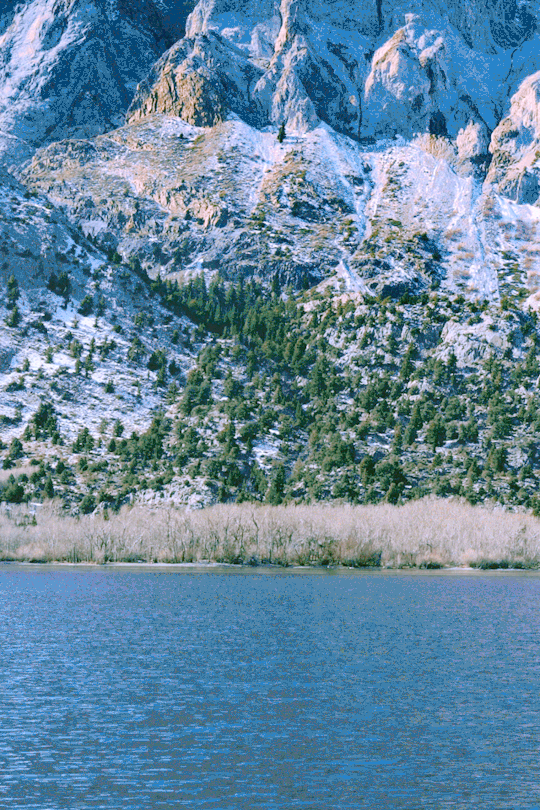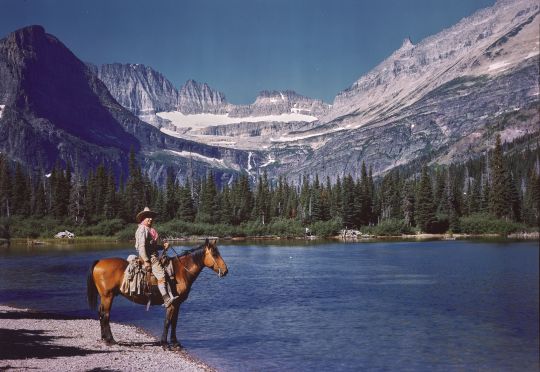Photo
one of my favorite places


refuge; convict lake, california
instagram / twitter
8K notes
·
View notes
Text

A hiker stops to refresh in the Valley of the Ten Peaks Alberta, Canada
1980
629 notes
·
View notes
Text



quick shots I took at galaxy’s edge today, it was so pretty at night!
0 notes
Photo




Anyone who consumes a heavy diet of social media knows just how image-driven it is. On National Wildlife Day, we’re celebrating the photographers and people who honor these creatures and share in the responsibility of keeping wildlife wild. These faces of wildlife, thank you.
🦊
🦡
🦆
Photo 1, badger by Tom Koerner USFWS. Photo description: A brown and cream colored badger sticks its head out of a hole in the ground. It’s snout is covered in dirt. Photo 2, bullfrog by Spencer Neuharth USFWS. Photo description: A bullfrog pokes its head out of the lake weeds and water. Photo 3, cross fox by Lisa Hupp USFWS. Photo description: A fox looks relaxed as it lays in a nest of fresh grasses. Photo 4, spectacled eider by Peter Pearsall USFWS. Photo description: A white and gray colored duck moves water through it’s open mouth.
311 notes
·
View notes
Text

missing winters when the soles of my shoes would melt.
0 notes
Text

Some hunters pose for a photo while camping at Norcross Brook. North-Central Maine 1886
171 notes
·
View notes
Text

Jim Whilt, "Poet of the Rockies"
Sometimes known as the “Poet of the Rockies,” Jim Whilt (1878-1967) was a colorful person in Glacier’s history. He spent over 30 years in the park, working as a trapper, guide, and camptender.
As a guide for horseback trips, Whilt took part in the tradition of telling tall tales and spinning yarns about the park to entertain the “dudes” under his charge. One of these dudes, Edith Smejkal from Chicago, must have enjoyed his tales because she married him in 1928 after he had guided her horseback outing in Glacier. Whilt gathered some of his musings (many of which we might call “dad jokes” today) into a volume called “Giggles from Glacier Guides,” published in 1935. Here are some excerpts from that work:
“In the spring my work starts as the snows are leaving, having to set out wild flowers over five miles of trails to Grinnell Glacier; various waterfalls have to be turned on and several rock gardens have to be planted. Some plants have to be put in where it is impossible to climb. For this I have two trained monkeys.”
“[At the end of the summer,] we have to go over the entire park, shut off all the waterfalls, fold up the switchbacks, brand all the young sheep and goats, dig all the dens for the bears, teach the little fish to swim and plant them in different lakes and streams.”
“Speaking of sheep, we have the usual bighorn. Some old rams have horns so large they are unable to carry them naturally. They have conceived the idea of putting two small wheels under their chins so as to support the weight of their horns. In winter they substitute runners in place of the wheels. We have two kinds of sheep, the bighorn that I have just told you about, and the other is called the iron sheep. Every spring we have to round up the latter and shear them, for it is the iron sheep that furnishes the steel wool.”
“Besides the rides, there are wonderful walks [in the park] for the hikers. One especially is the walk from Many Glacier around Swift Current Lake. If the walk is too long for tired city folks to walk around the lake, they can walk half way around and then walk back.”
In a 1938 issue of the park’s “Glacial Drift” naturalist newsletter, ranger H.E. Bailey wrote this about Whilt:
“Living in the park region for a great many years, one of the best known guides working for the Saddle Horse Company is Jim Whilt, who was assigned the trip to Grinnell Glacier five years ago. Jim claims this was done because it would be no loss to the company if he fell into a crevasse ‘whereas if another guide met the same fate, it would be a severe loss.’ Jim delights his audience with his formula for coffee which he calls ‘the real arbuckle mud.’ His formula is simple: merely place a horseshoe in the bottom of the coffee pot; when it rises to the surface the coffee is done. He advises those who have never ridden a horse before to inform him of the fact in advance so that he can pick out a horse that has never been ridden, and the two can learn together.”
Whilt wrote several other volumes of prose and verse, including Mountain Echoes, Animal Friends of the Wild, and Mountain Memories.
This photo, taken by John Kabel in the early 1940s, shows Whilt on horseback next to Josephine Lake with Grinnell Glacier in the background.
32 notes
·
View notes
Text

think I might just use this app to post some photos I have taken.
1 note
·
View note

